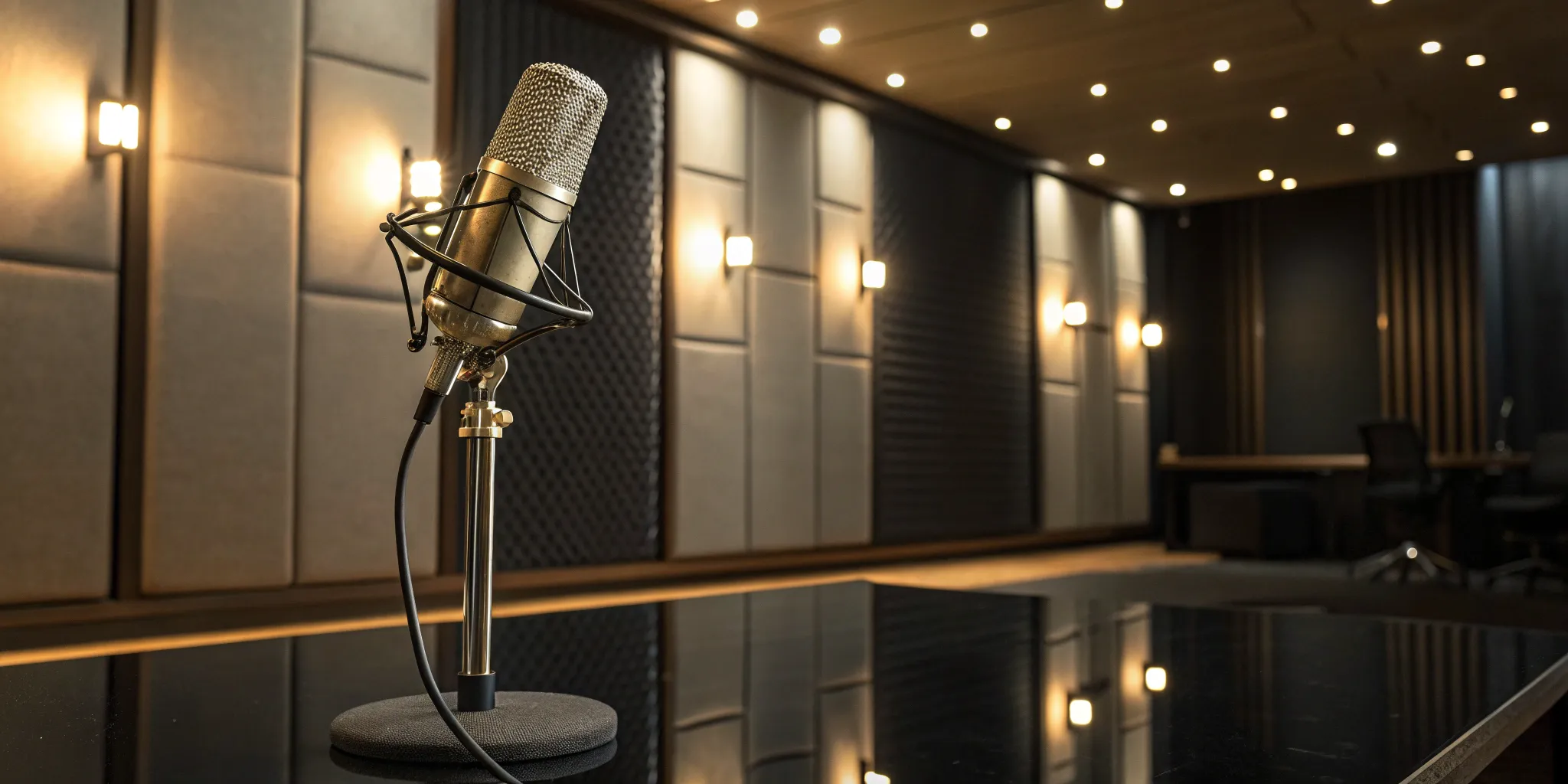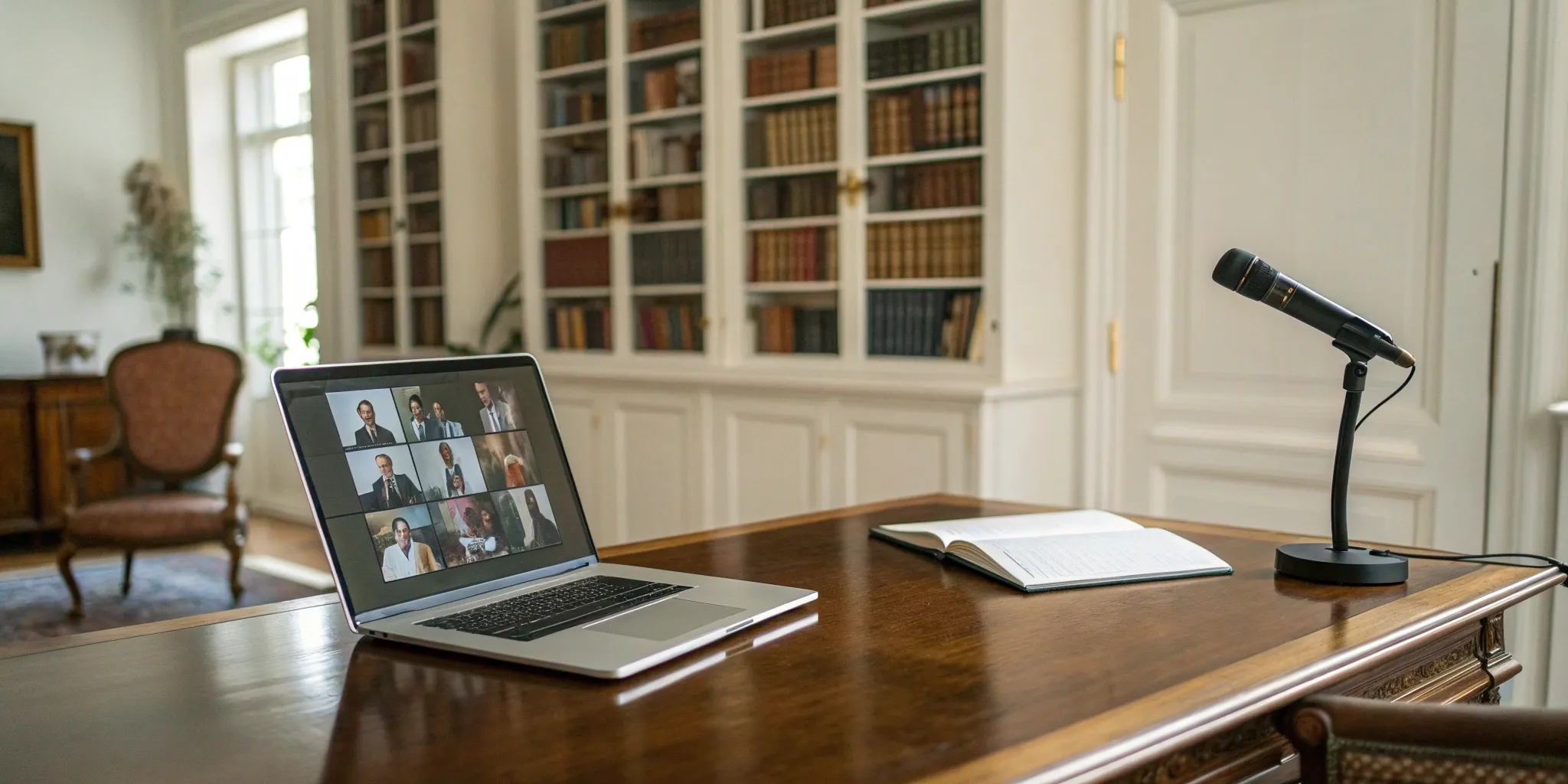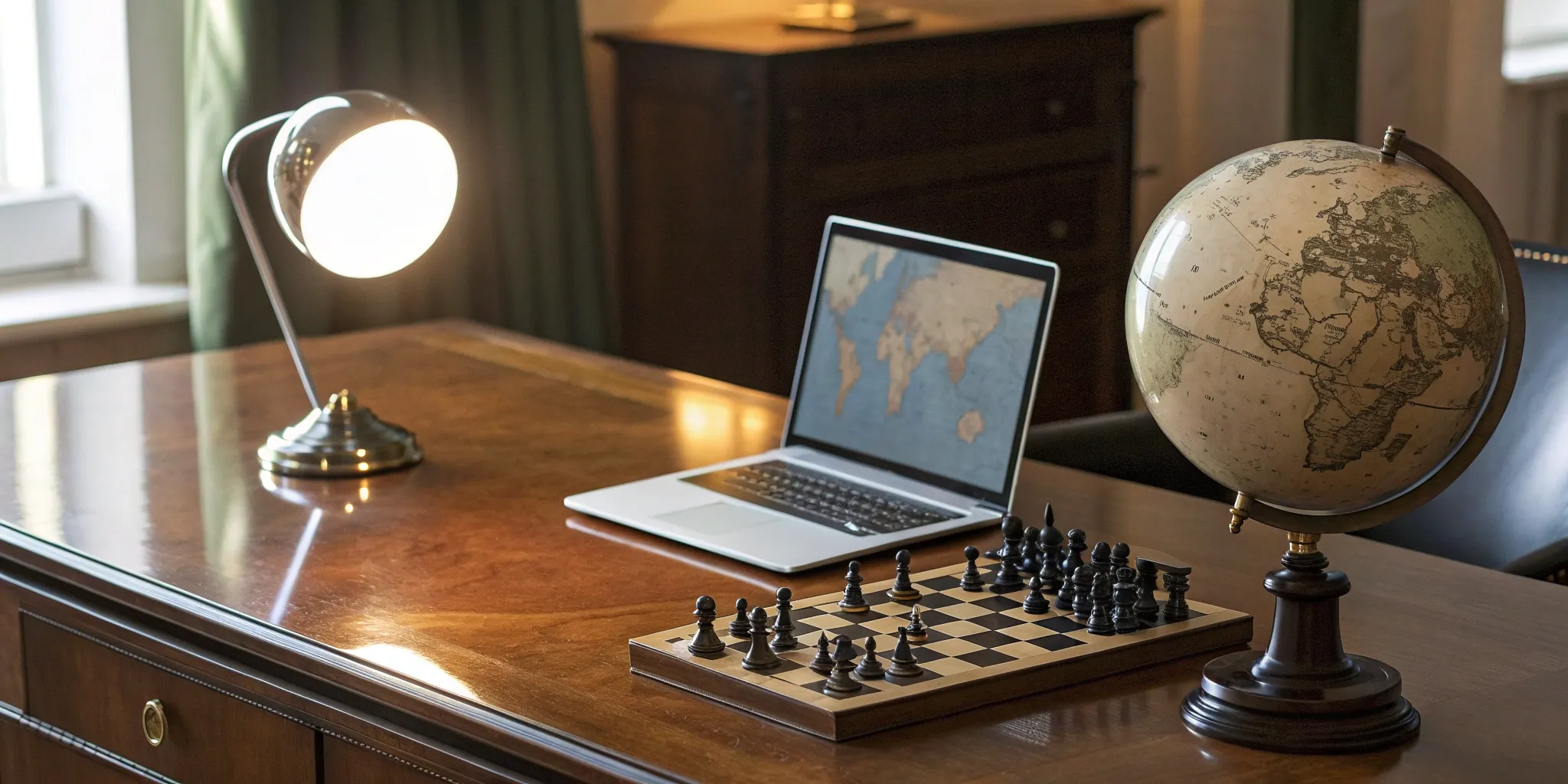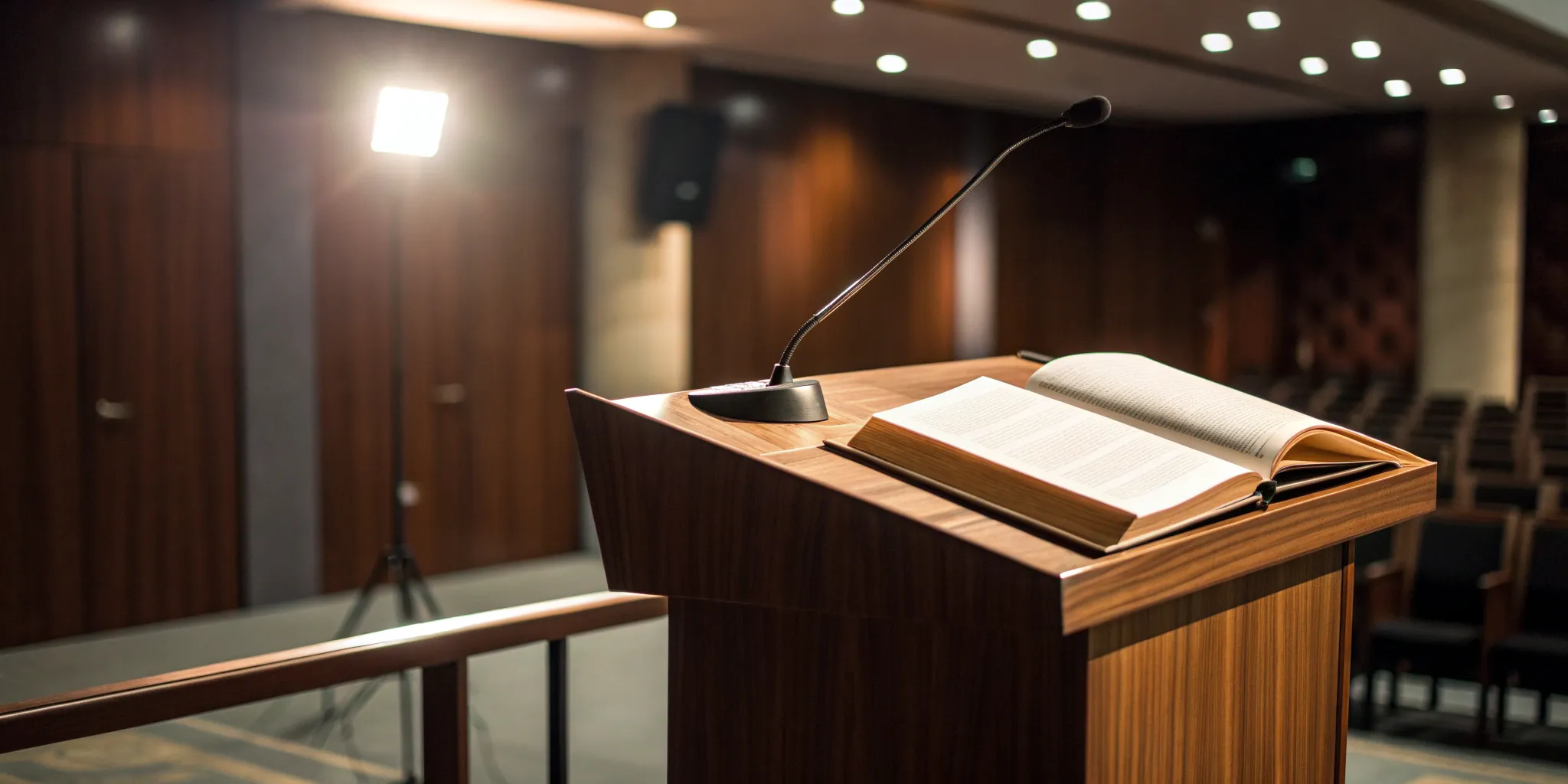You’ve written the book or built the company; now it’s time to share your story with the world. But the path from your desk to a headline involves a team of skilled professionals. The structure of a PR agency is the operational blueprint that makes this journey possible. It’s a collaborative ecosystem where strategists, writers, and media relations experts work together seamlessly. Your account manager translates your vision, the creative team crafts compelling angles, and the media team finds the perfect journalists to pitch. This integrated approach ensures that every action is purposeful and aligned with your ultimate goal: building a powerful and credible personal brand.
Key Takeaways
- A PR agency provides a team of specialists: Your campaign benefits from a coordinated effort between media relations experts who build press relationships, creatives who shape your story, and a dedicated account manager who guides the entire strategy.
- The agency structure is built for accountability: From the coordinator handling daily tasks to the director overseeing strategy, each role ensures your campaign is managed efficiently and that every action aligns with your long-term brand goals.
- Choosing the right agency model is critical: While large firms have vast resources, a boutique agency offers a more personalized and agile approach, giving authors and CEOs direct access to senior experts and a strategy built specifically for their unique brand.
What Does a PR Agency’s Structure Look Like?
When you partner with a public relations agency, you’re not just hiring one person; you’re gaining an entire team dedicated to sharing your story. While every agency has its own unique flavor, most are built on a similar framework designed to deliver consistent, high-quality results. Understanding this structure helps you see exactly how your investment translates into media placements and brand growth. It’s a system of specialized roles working in concert, from the person pitching reporters to the leader guiding your overall strategy. This collaborative approach ensures that every part of your campaign is handled by an expert, giving you a powerful and well-rounded team.
Curious how this maps to your goals? Book a call.
The Classic Agency Hierarchy
Most PR agencies follow a clear hierarchy to keep campaigns running smoothly and ensure you always have a point of contact. Think of it as a ladder of experience. At the base, you have account coordinators and assistants who handle essential daily tasks. Moving up, you’ll find account executives who manage relationships and execute the strategy. Above them, account managers and directors oversee the entire campaign, ensuring everything aligns with your goals. This agency structure is designed for efficiency and accountability. It means that while several people are working on your behalf, there’s always a senior strategist making sure the team is on track and delivering the results you expect.
Key Leadership Roles
Just like in your own organization, a PR agency is guided by a leadership team that sets the vision and standard for excellence. These roles typically include a CEO or President, Vice Presidents, and Directors. While you may not speak with them every day, their influence is felt throughout your campaign. They provide high-level strategic oversight, cultivate top-tier media relationships, and ensure the entire agency is equipped to meet client needs. At a boutique firm like ours, this leadership is often more hands-on, offering you direct access to decades of experience. You can get to know our own leadership by checking out the Leverage with Media team page.
See how leadership time appears in packages.
Behind the Scenes: Support and Operations
A great media placement is just the tip of the iceberg. Beneath the surface, a tremendous amount of work goes into making it happen. This is where the support and operations team comes in. These are the people meticulously building and maintaining relevant media lists, crafting thoughtful, data-backed pitches, and managing all the follow-up with reporters and journalists. They handle the crucial, often unseen, responsibilities of PR that lay the groundwork for your success. This detailed work ensures that when we pitch your story, we’re contacting the right people at the right time with a message that resonates, dramatically increasing your chances of getting featured.
Exploring Different Agency Models
The PR industry isn’t one-size-fits-all. Support can come from large global agencies, in-house corporate departments, solo practitioners, or specialized boutique firms. Each model offers a different experience. Large agencies have vast resources, while in-house teams offer deep company knowledge. However, for many authors, CEOs, and entrepreneurs, a boutique agency provides the perfect balance. As a boutique firm, we offer a highly personalized and agile approach. You get direct access to senior experts and a strategy tailored specifically to your unique brand and goals. Understanding these different agency models helps you choose the partner that best fits your vision and working style.
Who Does What? A Breakdown of Core Departments
Think of a PR agency as a specialized team where every player has a distinct and vital role. While the structure can vary—especially between large global firms and boutique agencies like ours—the core functions remain the same. Understanding who does what helps you see exactly how your story goes from an idea to a feature in a major publication. Each department works in sync with the others, all focused on a single mission: getting your message heard. Let’s pull back the curtain and look at the key teams that make the magic happen.
Your Point of Contact: The Account Team
The account team is your home base within the agency. Led by an account manager, these are the people you’ll be talking to the most. They act as the primary link between you and the rest of the agency, ensuring your vision and goals are clearly understood and executed. Your public relations account manager is your strategic partner, responsible for overseeing the entire campaign, from initial planning to final reporting. They coordinate all the moving parts, keep projects on schedule, and make sure the work we deliver is perfectly aligned with your brand and objectives. Think of them as the quarterback of your PR strategy.
Getting You Press: The Media Relations Team
This is the team that builds bridges to the media. The media relations specialists are the expert networkers who cultivate and maintain strong relationships with journalists, producers, editors, and podcasters. Their job is to find the perfect home for your story. They don’t just send out mass emails; they carefully match your expertise and message to the right media outlets and specific writers who cover your field. This team is constantly in communication with the press, pitching compelling angles and coordinating interviews. Their deep media connections are what allow us to secure the kind of positive press coverage that builds credibility and authority for our clients.
Bringing Ideas to Life: The Creative Team
The creative team members are the master storytellers. They take the core of your message—the ideas in your book or the mission of your company—and develop the innovative concepts that will capture the media’s attention. This team is responsible for the “big ideas” behind your PR campaign. They craft compelling press releases, develop unique story angles, and create the materials needed to support your pitches, like press kits and media briefs. They work hand-in-hand with the account and media relations teams to ensure every idea is not only creative but also strategic and newsworthy, giving your story the best possible chance to land.
Managing Your Online Presence: The Digital Team
In today’s world, a press feature is just the beginning. The digital team is responsible for managing and amplifying your story across the online landscape. This includes social media strategy, online reputation management, and leveraging digital platforms to build your personal brand. When you get a great placement, this team ensures it reaches a wider audience by sharing it across your social channels and engaging with the conversation online. They understand how to use digital PR to extend the life of your media wins, driving traffic and building a community around your brand, which is essential for authors and CEOs alike.
Measuring Success: The Research and Analytics Team
How do you know your PR investment is working? That’s the question the research and analytics team answers. This team is focused on tracking and measuring the effectiveness of your PR campaigns. They go beyond simply counting media mentions, looking at metrics like audience reach, message resonance, website traffic, and sentiment analysis. One of the biggest challenges in our field is measuring the ROI of PR, and this team provides the concrete data to demonstrate the value of our work. Their insights also help us refine our strategy over time, ensuring we are always focusing our efforts where they will have the greatest impact.
Roles and Responsibilities at Every Level
A PR agency runs like a well-oiled machine, with every person playing a distinct and crucial part in telling your story. From the person compiling your media lists to the executive shaping your long-term brand strategy, understanding these roles helps you see exactly how your investment translates into results. It’s a team effort, and each level of the agency structure is designed to support your goals.
The Foundation: Entry-Level Roles
This is where the magic begins. Interns and Account Coordinators (ACs) are the backbone of the account team, handling the essential tasks that keep a campaign moving forward. Think of them as the detail-oriented doers. ACs are often responsible for building and maintaining media contact lists, monitoring news and social media for mentions of your brand, and drafting initial reports. While you might not interact with them daily, their work provides the solid foundation that allows the rest of the team to focus on strategy and outreach. They ensure every piece of the puzzle is in its right place.
The Strategists: Mid-Level Managers
Here you’ll find your day-to-day strategists and relationship builders. Account Executives (AEs) are masters of outreach, connecting with journalists, producers, and influencers to pitch your story and secure media placements. They are often the ones writing compelling press releases and crafting social media content. Your Account Manager takes a broader view, overseeing the entire project and ensuring all the promotional content aligns with your brand’s image and goals. They are your go-to for updates and strategic discussions, making sure the team is consistently hitting its marks and effectively enhancing your brand.
The Visionaries: Senior Leadership
At the top, you have the agency’s visionaries. The CEO or President is responsible for the agency’s overall direction, culture, and long-term strategy. They ensure the firm is delivering on its promises and staying ahead of industry trends. Just below them, Vice Presidents or Executive Directors manage the agency’s daily operations. They work to translate the CEO’s vision into actionable plans, oversee key accounts, and provide senior-level counsel to clients like you. This leadership team provides the high-level oversight that guarantees your PR strategy is not just effective today, but also sustainable for the future.
The Specialists: Experts in Niche Areas
Many agencies, especially boutique firms, have team members with deep expertise in specific fields. This is a huge advantage for clients. Instead of a generalist, you get someone who truly understands your world, whether it’s tech, healthcare, or non-fiction publishing. These specialists might hold titles like Crisis Communications Specialist, Public Affairs Officer, or, in our case, experts in promoting authors and CEOs. This specialized public relations structure means your strategy is built on a genuine understanding of your industry’s landscape, challenges, and opportunities. It’s the difference between a generic approach and a truly tailored one.
How a PR Team Works Together
In a strong PR agency, departments don’t work in silos. Think of your account manager as the central hub of communication. They are responsible for understanding your vision and translating it into a clear strategy for the rest of the team. They work hand-in-hand with the media relations department to shape pitches that will actually land with journalists and producers. The media team provides real-time feedback on what the press is looking for, while the creative team might be looped in to develop supporting assets. This constant flow of information ensures that every part of your campaign is cohesive, strategic, and aligned with your goals. A skilled public relations account manager is key to making this collaboration seamless.
Keeping Projects on Track
With so many moving parts, you need to trust that your projects are moving forward efficiently. This is where the account executive comes in. They are the ones on the ground, managing the day-to-day workflow to keep everything on schedule. They handle tasks like drafting press releases, sending pitches, and coordinating interviews. A well-run agency uses project management systems and holds regular internal meetings to track progress and address any roadblocks immediately. This structured approach means deadlines are met and your campaign is executed flawlessly. The agency structure is designed for accountability, ensuring that every detail of your PR plan is handled with care from start to finish.
How Your Agency Serves You
Ultimately, an agency’s internal structure is all about delivering better results for you. When you partner with a PR firm, you aren’t just hiring one person; you’re gaining access to a team of experts with diverse skills. The media relations specialists have deep connections with the press, the writers are expert storytellers, and the account managers are skilled strategists. At a boutique firm, this collaboration is even more powerful. We bring together the right people to create a tailored strategy that fits your specific needs, whether you’re launching a book or building your brand as a thought leader. This personalized approach ensures you receive a comprehensive service that goes beyond just securing media placements.
Ensuring Top-Notch Work
To guarantee the quality of your campaign, there are layers of oversight built into the process. Senior leaders, like an Account Supervisor or Director, guide the overall strategy and review all materials before they reach the public. They ensure that every pitch is thoughtful, every press release is polished, and every action aligns with your long-term objectives. This level of supervision is critical for maintaining a high standard of excellence. It’s not just about getting press; it’s about getting the right press in a way that protects and enhances your reputation. Fulfilling the core responsibilities of PR means creating data-backed pitches and managing all follow-through with professionalism, which is exactly what this oversight ensures.
Growing a Career in Public Relations
A career in public relations is dynamic and rewarding, but it requires real dedication. It’s about more than just sending emails; it’s about building relationships, telling powerful stories, and shaping perceptions. For anyone starting out, the path is paved with learning opportunities that build a strong foundation in communication and strategy. As you move from an entry-level position to a leadership role, your focus will shift from execution to strategy, but the core principles of clear communication and integrity remain the same. This path offers diverse opportunities for those who are curious, resilient, and passionate about making an impact for their clients. Understanding this career trajectory helps clients appreciate the depth of experience and skill that goes into managing their public image, from the junior associate who tracks media mentions to the senior director who guides their long-term brand vision.
Starting Out: Common Challenges
When you’re new to PR, you’ll face a few common hurdles. Building a network of media contacts from the ground up can feel intimidating. At the same time, you’ll be learning to craft compelling pitches that perfectly capture a client’s voice while following strict brand guidelines. One of the biggest adjustments is learning how to manage your time effectively. Juggling multiple clients, projects, and deadlines is a skill that takes practice and precision. These are the challenges every new PR pro faces, and working through them is the first step toward a successful and impactful career.
The Skills You’ll Need to Grow
To move forward in your PR career, focus on developing a few key areas. Continuously sharpen your writing and communication skills—they are the foundation of everything you do. Next, make networking a priority. Building genuine relationships with journalists, editors, and other industry professionals will be invaluable down the line. Finally, learn to embrace feedback. Constructive criticism isn’t personal; it’s a tool to help you refine your approach and produce better work for your clients. A willingness to learn and adapt is what separates good PR pros from great ones.
How Performance is Measured
Your performance in a PR agency is measured by the quality and consistency of your work. It goes beyond simply landing a placement. Success means creating thoughtful, data-backed pitches that show you’ve done your research. It involves actively engaging with reporters and maintaining organized, up-to-date media lists. A key part of your responsibilities will be managing all the follow-through, from sending that initial pitch to coordinating interviews and providing assets. Your reliability and attention to detail are just as important as the big wins, as they build trust with both your team and the media.
Opportunities for Professional Growth
A career in a PR agency offers a surprisingly diverse range of paths. While you might start in a generalist role, you can eventually specialize in areas that match your interests and strengths. You could focus on media relations, becoming the go-to person for landing top-tier press. Or you might find your calling in issues and crisis management, helping clients through their most challenging moments. Other career path opportunities include brand building, corporate reputation management, and event planning. Each specialty requires a unique skill set, allowing you to carve out a niche where you can truly excel.
The Path to Leadership
As you advance, your role will evolve from executing tasks to guiding strategy. The path to leadership often leads to positions like Public Relations Account Manager or Director. In these roles, you oversee the team’s work, ensuring all content and campaigns align with the client’s goals. You become the main point of contact for the client, building a strong partnership based on trust and results. Your focus shifts to the bigger picture: enhancing the client’s brand, managing their reputation, and leading your team to deliver exceptional work that makes a real impact.
Related Articles
- What is a PR Agency? Understanding Its Role & Importance – Leverage with Media PR
- Understanding PR Agency Pricing Models & Costs – Leverage With Media PR
Frequently Asked Questions
Who will be my main point of contact at the agency? You will have a dedicated Account Manager who serves as your primary partner and strategist. This person is the central hub for all communication, responsible for understanding your vision and ensuring the entire team is working together to achieve your goals. While several people will be working on your account, your Account Manager is your go-to for updates, questions, and strategic discussions.
What’s the real difference between a boutique agency and a large firm? The main difference comes down to personalization and access. Large agencies often have vast resources but can sometimes feel impersonal. As a boutique firm, we provide a highly tailored and agile service. You get direct access to senior experts and a strategy built specifically around your unique brand and objectives, rather than a standard, one-size-fits-all approach.
How do you decide which journalists to pitch my story to? Our process is strategic and research-driven. We don’t send out mass emails. Instead, our media relations team carefully identifies journalists, producers, and podcasters who specifically cover your area of expertise. They build genuine relationships with these contacts, allowing us to pitch your story as a relevant and timely idea to someone who is actually looking for it.
How will I know if my PR campaign is actually working? We focus on providing clear, data-backed results. Our team tracks more than just the number of media placements. We measure the impact of our work by analyzing metrics like audience reach, message resonance, and shifts in website traffic. This gives you a concrete understanding of the value of your investment and helps us continually refine our strategy.
What does the team do for me on a day-to-day basis? A great media placement is the result of consistent, daily effort. Behind the scenes, our team is constantly at work for you. This includes monitoring the news for opportunities, meticulously building and updating media lists, crafting compelling story angles, writing and sending pitches, and managing all the follow-up with reporters. It’s a coordinated effort to ensure your story is always ready to be told to the right person at the right time.




































































































